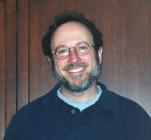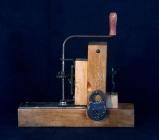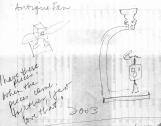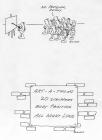1
Allan Hirsh, the eldest of two children, was born in 1948 in Montreal, Quebec, where he was raised. In 1966, he did a year of studies in engineering at McGill University in Montreal, followed by a Bachelor of Science, which he completed in 1971, majoring in psychology and minoring in mathematics.He moved to Saskatoon, Saskatchewan, in 1971, where he earned a Masters from the University of Saskatchewan Graduate School of Psychology from 1971 to 1973, concentrating on clinical and consulting psychology.
Allan runs a private practice in North Bay, Ontario. He is the father of three children from two past marriages.
He has served on the board of White Water Gallery in North Bay since 2005.
He had a solo exhibition called 'For Amusement Only' at White Water Gallery in 2000. The group exhibition 'Accumulation' (2004, curated by Lise Melhorn-Boe with featured artists Allan Hirsh, Betty Sager, and John Weiss) was the opening exhibition for the new location of White Water Gallery at 147 Worthington Street.
His cartoons have been published in 'A Cup of Chicken Soup for the Soul' (Jack Canfield, Mark Hanson and Barry Spilchuk, Health Communications, 1996), Let's Talk About (TM)...Money (Paul Barton and Barry Spilchuk, 2001), and 'Chicken Soup for the Canadian Soul' (Janet Matthews and Reaymond Aaron, Health Communications, 2003), as well as books that he has written (Getting Along-The ABC's of Human Relations, co-written with Donna Sinclair. Wood Lake Press, 1993; and RELAX FOR THE FUN OF IT: A Cartoon & Audio Guide to Releasing Stress. Caramal Publishing Inc. 2001.)
(The biographical information featured here was written in consultation with the artist in 2006.)
Interview:
Q: What is your earliest memory of creating art?
A: At age five, my mother took me to art classes at the Montreal Museum of Modern Art. I can remember making a train car out of a block of clay.
Q: When did you first feel like an artist?
A: In 1978, I was living alone in the bush and began to make collages out of scrap wood.
Q: Please describe your creative process for both comic art and sculpture.
A: Comic art: I will allow a target concept to roll across my brain until either a punch line or an image strikes me. At other times, I will brainstorm with a pencil in my hand. The resulting cartoon will be more image-driven and less punch-line-driven.
Sculpture: The process begins with searching out interesting objects that resonate with me. The object itself sparks the creative process and challenge. From then on it is an intuitive trial and error process until I have a sense of completion and satisfaction. The more I am in touch with my intuitive creative sense, the more peaceful and successful I feel.
Q: What attracts you to the found objects you incorporate in your sculptures?
A: I don't always know. Some of it has to do with the patina, shape, function, mystery and antique quality of the object. When I hold it in my hand then I know for sure if I want to keep it or let it go.
Q: Taking into consideration your professional work, I'm wondering if part of the appeal of comic art for you is its therapeutic potential. Any thoughts?
A: Humour can help someone stand back and see their situation from a different perspective. It can help shift one's gears into a lighter mode. The ability to laugh at a problem helps provides some distance and the illusion of control. Victor Borge said that humour is the shortest distance between two people. Connection is the main tool in psychotherapy.
Q: Which artists (local, historical, etc.) have impacted your work?
A: Lynn Johnston has been very supportive of my creativity. She encouraged my cartooning and my sculpture. I am very impressed with Louise Nevellson and her use of shape and space. I was very moved listening to Henry Moore talk about his process of creation. He said that he either adds something or take something away to make his work better. This intuitive process plays itself out until the work is complete. Hearing his words opened inner doors for me.
(By Heather Saunders, based on an interview in January, 2007).



